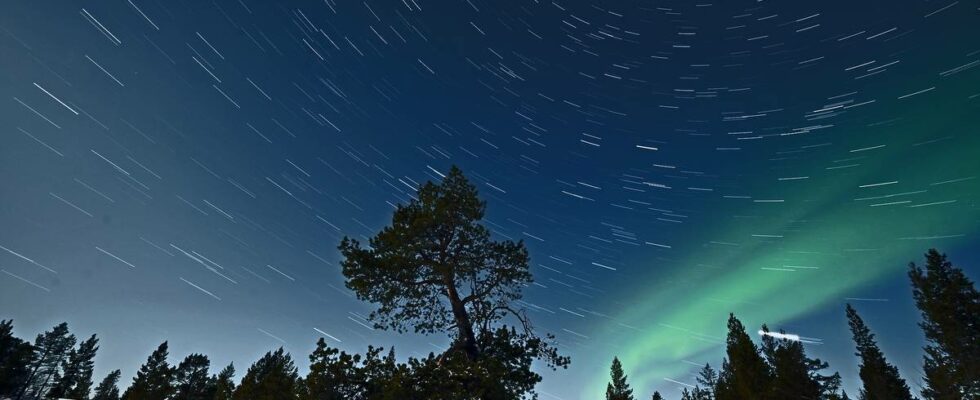Summary • Øvre Pasvik National Park in Sør-Varanger has been given the status of a “Dark-sky” park, which means that the area is dark enough to see a naturally dark night sky and that the park undertakes to keep it dark in the future. • Initiator Bernt Nilsen believes that the certification will lead to international attention for Pasvik and increase star tourism.• Sigrid Ina Simonsen, director of NHO Arctic, believes that astrotourism can make Sør-Varanger a major tourist destination.• This is the first time a national park in Norway receives this certification, and it has been a demanding process that has taken three years.• At the same time that tourism is increasing, the CO2 emissions associated with tourism are also increasing, and Simonsen emphasizes that it is important to find a sustainable way of managing tourism. The summary is made by an AI service from OpenAi. The content is quality assured by news’s journalists before publication. – Many people know about bird tourism. Star tourism is about to become just as big, says Bernt Nilsen. Øvre Pasvik National Park in Sør-Varanger has been given the status of a “Dark-sky” park. Globally, the work on light pollution is fronted by the organization “International Dark Sky Association”. Through the International Dark Sky Places (IDSP) programme, communities, parks and other areas around the world are certified that preserve and protect dark places. They are the ones who approve that a place receives this certification. It essentially means two things: It is so dark that you can see a naturally dark night sky. This means that there is a great chance of seeing the Milky Way and other constellations on clear nights. It also means that the national park undertakes to keep it dark. Nilsen, who has been the initiator and is himself a member of the organization “Dark sky”, believes that the certification will lead to international attention for Pasvik. As a member of the DarkSky organisation, Øvre Pasvik National Park receives assistance from them for dissemination, offers for experiences and reduction of light pollution. First in Norway Nilsen has traveled extensively around the world as a hobby photographer, and has himself hunted for celestial phenomena with his camera. – I have been particularly interested in taking pictures of clear night skies. In a national park in the USA, with good photo conditions, I saw a sign where the park was marked “Dark sky”, he says. This is how he got the idea to try to make this happen in Pasvik. For three years, the National Park Board and Nilsen have therefore worked for this. – There has been a lot of documentation that had to be put in place. For several years, we have been out at night to measure the light levels and document that it is dark enough, he says. They have also had to reduce artificial light sources in the area to a minimum. Around 200 natural areas in the world have received the same certification, but in Scandinavia, until now, there has only been one place in Denmark on the list. Finnskogen in Eastern Norway has previously tried to get the same certification, but for now it is not listed on “Dark Sky’s” website. This winter, Bernt Nilsen, a member of “Dark Sky”, was outside in minus 30 degrees to measure how dark it was in Pasvik. He has done this several times in recent years. Photo: Bernt Nilsen More winter tourists There are fewer and fewer places in the world where you can experience complete darkness. More than 80 percent of the world’s population lives in light-polluted areas. In Europe and the USA, the figure is as much as 99 per cent. Light pollution makes it harder to see the night sky. A third of the world’s population lives in places with so much light pollution that, for example, they cannot see the Milky Way. Foreign tourists have flocked to Finnmark in recent years. According to figures from Statistics Norway, the number of visitors in the winter half-year has increased from 34,000 tourists in 2014 to over 80,000 in 2024. Regional manager of NHO Arctic, Sigrid Ina Simonsen, believes star tourism will lead to more tourists in Sør-Varanger. Photo: Moment Studio – Growing niche Sigrid Ina Simonsen, director of NHO Arctic, emphasizes that the northern lights and cold winters are a big reason why tourists choose to spend their holidays here. However, she believes that astrotourism, or star tourism, can lead to even more tourists coming in the years to come. – Astrotourism already exists in several places in the world. It is a growing niche. It is an extremely exciting project in Pasvik, she says. Bernt Nilsen says that the national park is now preparing for the arrival of both locals and tourists. Among other things, they are in the process of buying binoculars and a telescope so that visitors can get the best possible experience of the night sky. – You can see the Milky Way with your own eyes, but if you want to see planets and parts of alien galaxies even closer, it is possible with the right equipment, he says. Published 17.07.2024, at 05.19
ttn-69
Øvre Pasvik National Park will turn the Milky Way into a tourist attraction – news Troms and Finnmark

